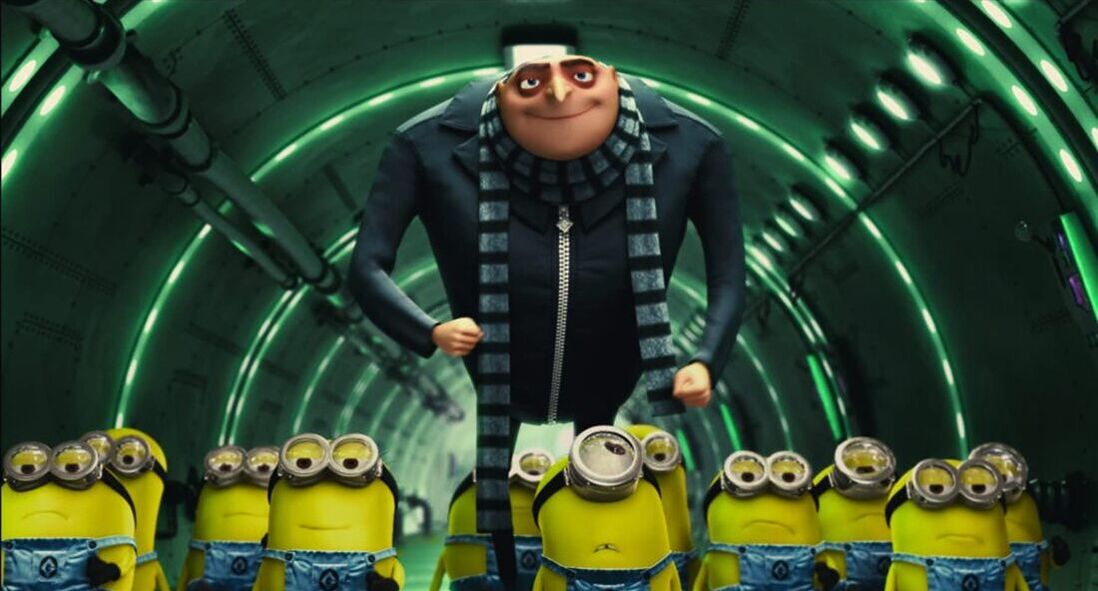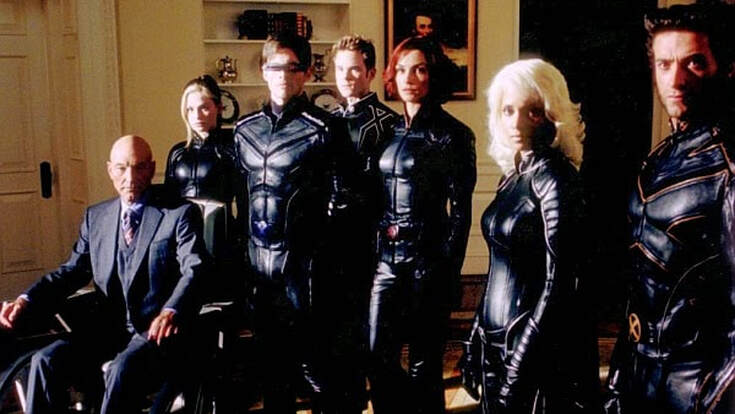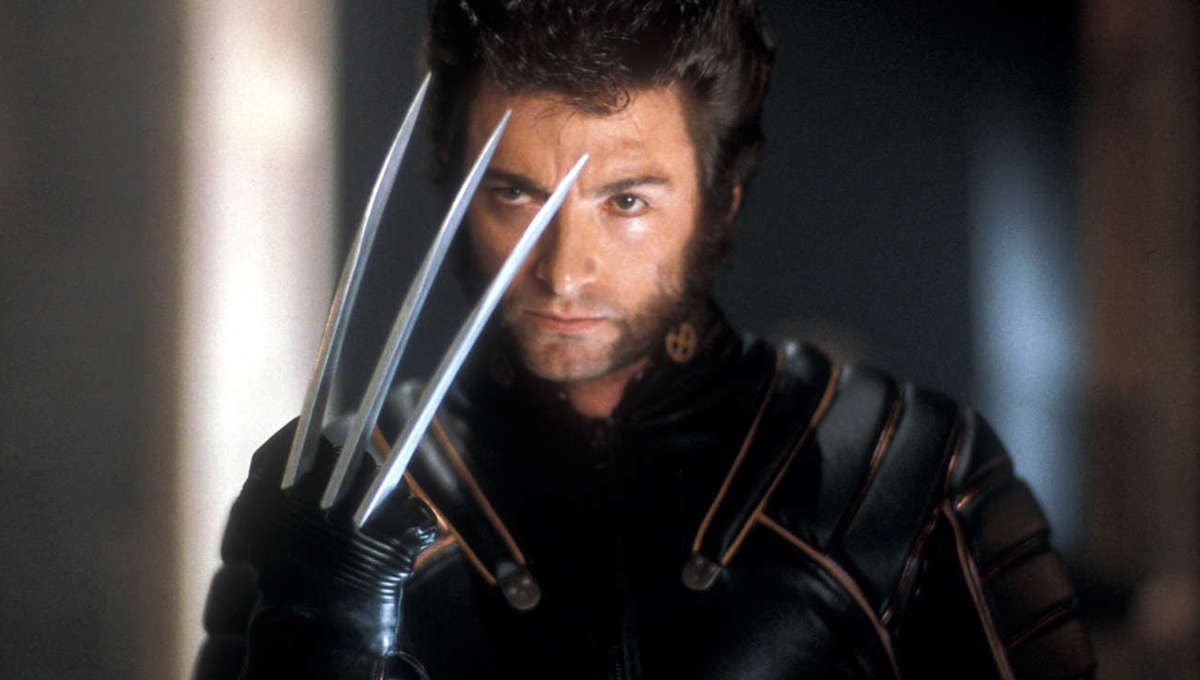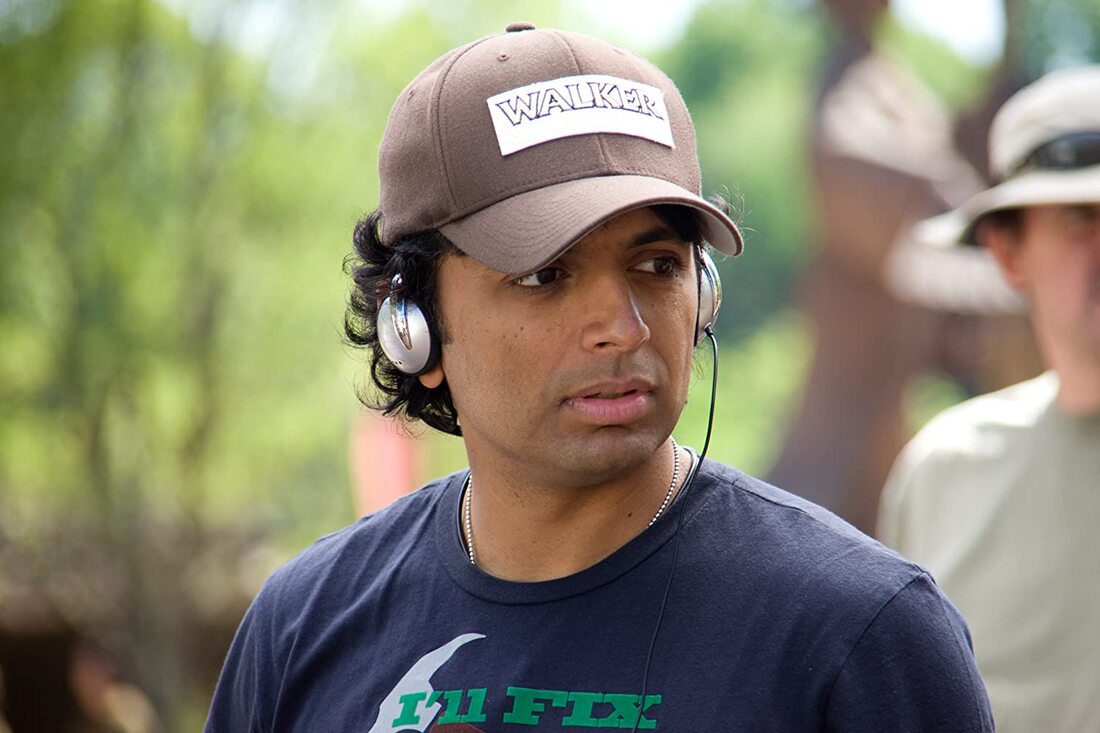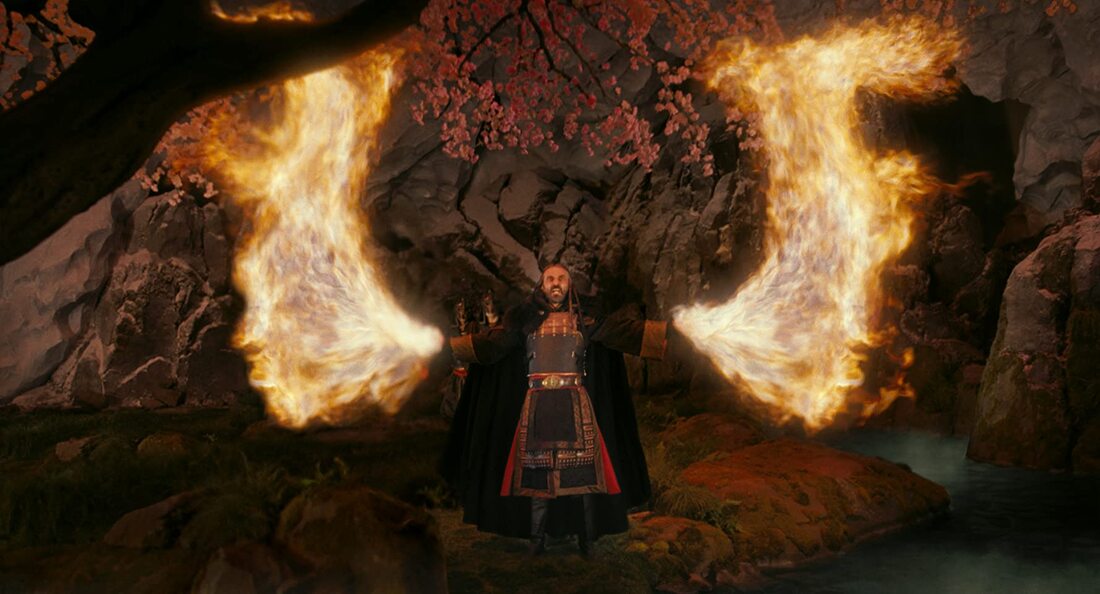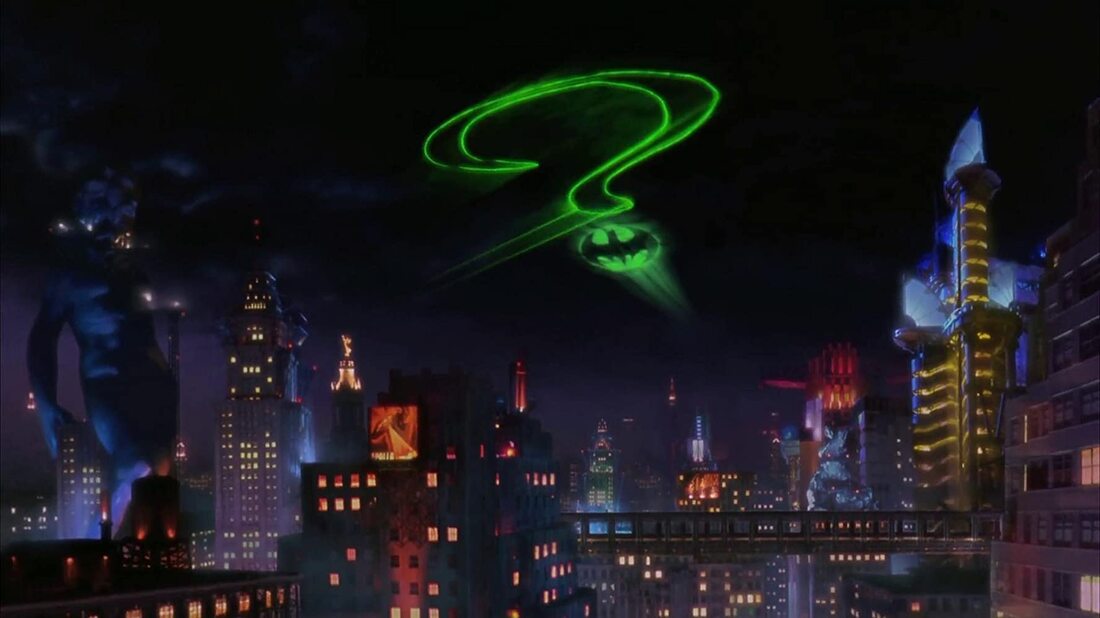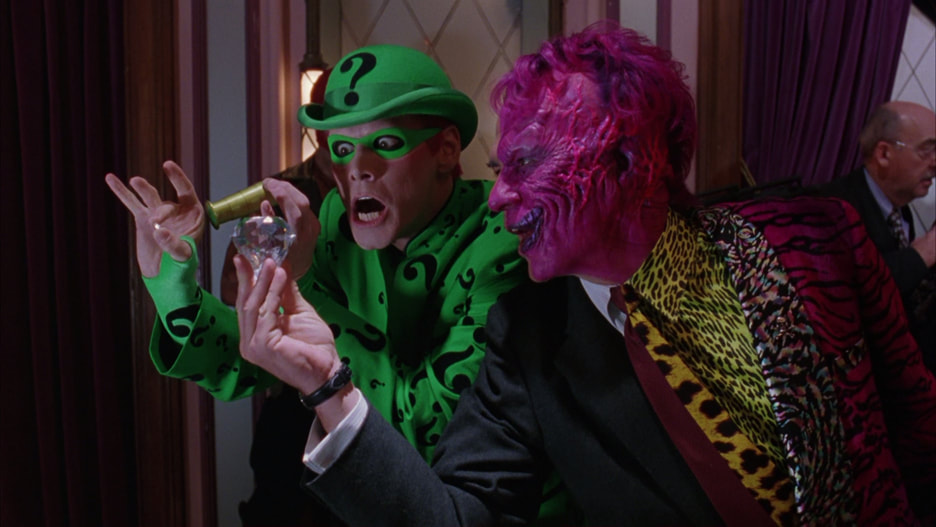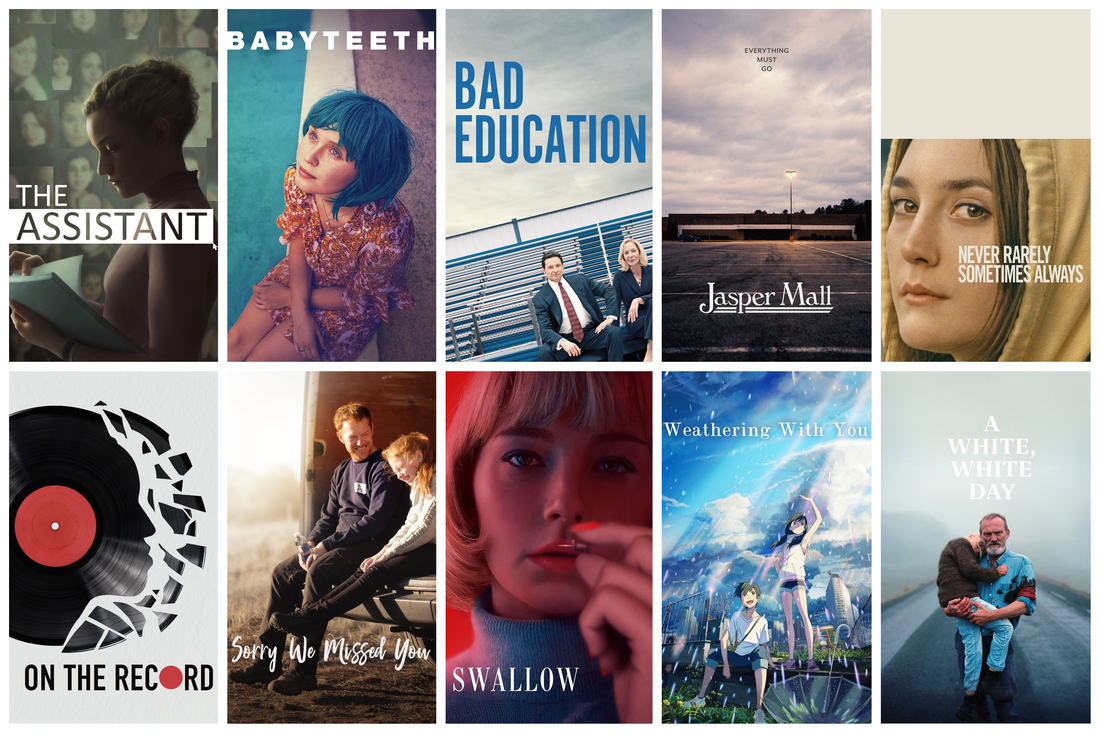|
By Adam Donato The film animation industry is limited in its big players. Pixar and Disney lead the charge while secondary studios like Dreamworks, Blue Sky, and Sony Animation struggle to consistently produce animated movies of high quality. In 2010, Illumination Entertainment burst onto the scene with Despicable Me. A familiar story of a villain enjoying being bad before going through a change of heart inspired by the kindness of others. With a relatively cheap budget for an animated movie, $69 million, Despicable Me exceeded expectations, making $543 million worldwide. Thus, a new franchise was born, and more importantly, the Minions became a staple of pop culture. People who are annoyed by the Minions, which can be justified, shouldn’t be shocked to hear that there is a large fanbase for the stupid yellow Tic-Tacs. They have been heavily featured in three Despicable Me movies and even got their own spin-off film, which is getting a sequel. The Minions are in the billion-dollar club, twice. Despite what the Minion brand spread into, they’re a good comic relief, sidekick for this movie. Their basic appeal is undeniable. They don’t speak any real language so there’s no cultural barrier. They don’t even have a discernable race since they are all yellow. They barely exhibit the male gender, which if they didn’t have predominantly male names like Kevin and Bob, it would be up to more of a debate. Their humor is very childish with all of the physical pain they inflict upon each other, but appeals to adults with their obvious pop culture references and musical cues. The character design is simple, but distinguishable. The Minions in the movies, at worst, are annoying and unfunny. The cause for the Minion hatred is the “relatable” Minion Facebook memes. In the movie, it is enjoyable watching them bond with the girls and it’s less annoying the first time watching them get into shenanigans because they’re stupid. The Minions, at a base level, work. Now about the rest of the movie, it’s surprisingly good. Revisiting it a decade later, it’s surprising to see how the emotional moments hold up. The bond between Gru and the girls is genuine and watching Gru struggle to be evil as his heart is being warmed is touching. For some reason, every animated movie for kids ends with a dance party with the entire cast (even the villain), but it feels like a crucial payoff of his character arc in this movie as he is experiencing love probably for the first time. This is done in the simplest way possible, as who doesn’t sympathize with adorable orphan girls. The story, as stated in the opening paragraph, is by no means original. This is another classic example of two of the same basic movie coming out in the same year, as Dreamworks’ Megamind can out only five months after Despicable Me. The two differ in that Despicable Me is more of a spoof on these ridiculous James Bond-esque villains and Megamind focuses more on superheroes. The point being that Despicable Me comes at a regular story from an interesting angle, but doesn’t stand out with quality in comparison to even the animated films of the same year. Toy Story 3 and How To Train Your Dragon came out earlier that summer and it was no question that the Best Animated Feature Oscar was a two-horse race. For an Illumination movie, Despicable Me is great. If it was a Dreamworks movie, it would be one of the better ones. If it was a Pixar movie, it’s only really better than Cars 2. What sets Pixar and Illumination apart? Quality. Pixar pushes boundaries and is constantly evolving its technology to create animated movies with beautiful visuals that complement their mature storytelling approach. Since 2006, Pixar has averaged a budget of $150 million per movie so they can have the time, resources, and talent necessary to set the standard for what animated movies should be. The mission statement for Illumination seems to be: Make a movie that is as commercially viable as possible with as little money as possible and in as short of time as possible. So while the success of Despicable Me is an achievement, it’s detrimental to the animation industry as the quality of the films will be sacrificed for an easy buck. The symbol for this cynicism, the Minions.
Speaking of villains (and getting back to the movie at hand), Despicable Me sports one who is fun and full of personality, Vector. Jason Segel really brings it in this voice performance so much so that he’s unrecognizable without knowing that it’s him. He acts as a good foil for Gru, as they’re both cheesy villains, but come for opposite backgrounds. Gru was denied love and came from a poor background where he had to work for everything. Vector was handed everything to him on a silver platter by his father, Mr. Perkins, who runs the bank, brilliantly voiced by Will Arnett, who actually gained weight to voice act this character. There is a visual gag in the movie that is so dumb that it’s brilliant, and it’s not the squid launcher. Vector steals the Pyramid of Giza and hides it in his yard, but in an attempt to hide it, he paints it sky blue with a cloud on it. Never fails to get a laugh. In short, Gru is an endearing protagonist, whose change of heart is authentic. The girls he adopts are cute and sympathetic. The minions aren’t annoying yet, actually being one of the highlights of this movie. The villains are fun and full of personality. The animation is good enough. The emotional moments all land surprisingly well and the jokes are consistently funny. Judging this movie on its own, not comparing it to other studios or the movies that followed in the franchise, then it’s a very solid animated family movie. Despicable Me was never going to win Best Animated Feature at the 2011 Oscars, but throw it a pity nomination. It’s good enough to deserve that.
0 Comments
By Dan Skip Allen Comic book movies weren't the first genre studios were thinking of when greenlighting movies in the 1990s. Warner Brothers had success with the Batman and Superman franchises in the past, but most comic book movies up until the 2000s had been either really dark and violent like The Crow and Blade or campy and over the top like The Mask or the later Batman movies. Lauren Shuler Donner, Ralph Winter, Kevin Feige, and many others were really reaching when trying to produce the X-Men into a big-budget film. They proved the nay-sayers wrong. Marvel Comics had a rough patch in the late nineties. In a way to gain capital to stay afloat, Marvel sold off the cinematic rights to some of their characters. 20th Century Fox bought the cinematic rights to the Fantastic Four and the X-Men. Subsequently, they fast-tracked the first X-Men movie. Donner and company enlisted the talents of Brian Singer, who gained acclaim for directing the critically and financially successful The Usual Suspects in 1995 and Apt Pupil in 1998. He was a hot commodity at the time. He was the right man for the job. Little did anybody know he had a love and passion for these characters for many years growing up as a kid. He took that love and passion and started working on the story and then cast his first epic comic book movie based on these popular comic book characters. The casting process wasn't hard except casting Wolverine/Logan. A lot of Hollywood stars wanted to be in this first big comic book extravaganza. Heavyweights like Patrick Stewart, Ian McKellan, and Halle Berry all signed on as well as Oscar-winner Anna Paquin. Dougray Scott was originally cast as Wolverine/Logan until he dropped out to do Mission: Impossible 2 for John Woo. The search was on to find another Wolverine/Logan. Little did anybody know the search would end with Broadway star and song & dance man Hugh Jackman. Nobody outside of Broadway circles ever heard of him. In an era before the internet, this still raised a lot of eyebrows in fan communities. Comic book fanboys have always been critical of strange casting news such as this, going back many years. Hugh Jackman would prove everybody wrong though and he would become Wolverine/Logan and own this character in multiple X-Men and Wolverine movies moving forward. The X-Men were finally coming to the big screen in 2000. Despite falling back on the dark costumes trope that has been shoehorned into so many comic book movies in the past, X-Men actually turned out very good and was a huge success financially and with fans. Magneto (Ian McKellan) had a plan to make everyone see that mutants should rule and humans should bow at their feet. His brotherhood, Mystique (Rebecca Roman), Sabretooth (Tyler Maine) & Toad (Ray Park) are his loyal acolytes and they help him try to accomplish his plan. Professor X (Patrick Stewart) tries to recruit a new mutant Rogue (Anna Paquin), but she has her own bodyguard in the form of Logan (Hugh Jackman). They are leary of Xavier and his group of misfits that include Cyclops (James Marsden), Jean Grey (Famke Jansen), Storm (Halle Berry), and many others. The X-Men dealt with social issues going back decades in the comics. It makes sense that these issues were brought into the movies. Problems between humans and mutants have been the driving force in the comics and Singer brings them to the forefront in the first X-Men movie.
Donner, Singer, and the entire cast and crew of X-Men have successfully made a comic book movie for the masses. It still stands up twenty years later. After countless dozens of comic book movies including many Spider-Man, MCU, and DCEU movies have followed, X-Men was the first that really got it right. This film paved the way for all those other films to come. X-Men used great acting, production design, story, and direction from Singer to make a great film. X-Men was very enjoyable for me and I was in from the very beginning of this film. I know I wasn't the only one. Many of my friends loved it as well. In that group, I know it was a success because they weren't the easiest people to please. I hope Marvel and Disney take these characters and bring them into the MCU and fans get to see the next iteration of these iconic characters Hugh Jackman and crew made famous twenty years ago this week. By Adam Donato One of the most prolific and celebrated shows from Nickelodeon is Avatar: The Last Airbender. The first of what was supposed to be a trilogy of movies was made, spearheaded by M. Night Shyamalan. The blockbuster cost about $150 million, not including marketing, and was released on July 1, 2010. The film was barely a success at the box office and the negative response to the movie, from critics and general audiences alike, was overwhelmingly bad. Today, it is remembered as one of the worst movies of all time. Obviously, The Last Airbender is a bad movie. There is no denying that. Acknowledging one of the biggest faults of the movie off the bat, in an effort to get it out of the way for the purpose of highlighting Shyamalan, is the source material for the movie. There’s a reason why the show is so beloved to this day and the reaction to the mistreatment of their story in the film was so bad. The show has fun and lighthearted comedy, but also features a story with mature themes and genuine characters. The pacing is fast, but dedicates most of the storyline fleshing out the characters and focusing on the story. The action looks very cool as it features martial arts, but also feels fresh as new bending techniques are shown throughout. The main trio, Aang, Katara, and Sokka, is up there with Harry, Ron, and Hermoine, as they play off each other well and have interesting dynamics. The villains are either complex and sympathetic like Zuko, or over the top and charismatic like Iroh and Zhao. The world building is immersive and the creatures they encounter are all imaginatively designed. The 2D animation helps the show stay light, keep the fights fast, and lends itself well to the colorful atmosphere of the world. The show is a work of art and the movie pales in comparison. For the tenth anniversary, let’s judge the movie on its own and focus on the filmmaking from Shyamalan. When it comes to movies about famous filmmakers, Shyamalan would make a great one due to the rollercoaster nature of his career. Imagine getting your first shot to make a movie of your own after working on a few smaller pictures. You’re an overnight success as the movie is not only a hit, but goes down as one of the greatest movies of all time. Then you make three other movies that are box office successes and are generally favored critically, but not to the extent of the first. Magazines call you the next Spielberg, despite your movies dropping in quality every time. You have an idea for a fairytale movie for your children, but Disney won’t give you creative control. After betting on yourself, the movie is a colossal flop both critically and at the box office. In your next movie, you’re forced to do rewrites for the first time and it still ends up being a total failure, but this time it’s comically bad. Finally, your child introduces you to cartoon show that you decide to make into a huge, big-budget trilogy. Caught up? The Last Airbender is arguably one of the biggest tests of Shyamalan’s career as the $150 million budget of the blockbuster is over twice as much as his usual $50-$60 million range. It’s also his first feature that is based on another person’s work. This is the first time he’s making a movie intended for children and is heavy with special effects. So, how did he do? Horribly. What did he get wrong about the source material? For some reason, he chose to change the pronunciation of all the names, which is the first thing anyone who is a fan of the show would say. Speaking of the characters, all the ethnicities are changed, even to the extent of whitewashing the main trio. The show deliberately made the different benders into races to explain why they are the way they are and to reflect their culture. Usually, changing the ethnicities from the source material would be done so that they could cast higher-profile American talent. The main trio that was whitewashed was mostly unknown at the time. The role of the title character is even played by someone who has never acted before, but was chosen due to his exceptional martial arts skills. Dev Patel, hot off of Slumdog Millionaire, is the most known member of the cast and he plays the movie’s villain, Prince Zuko. This is a good thing considering the fact that Jesse McCartney was originally cast as Zuko. The show had plenty of time to flesh out the characters and their relationship, whereas the movie feels rushed and skips over many necessary beats. To make up for this, there is a great deal of expository narration. Shyamalan’s first draft of the script was initially seven hours long, but the studio made him cut it down, for obvious reasons. Still, condensing an entire season into just over a hundred minutes is gonna feel rushed. The relationship between the characters has time to develop and the training seems progressive in the show, but in the movie, it just feels forced. The special effects get knocked a lot in this movie, but they’re not that terrible for 2010 standards. Appa looks very convincing, but it’s fair to say that Momo looks a little creepy. The bending scenes look cool, it’s just the timing that doesn’t make them land. Shyamalan chose to have Aang exclusively talk to one spirit and in the form of a giant, blue dragon. It’s hard to call the movie out on how bad it looks because one could say it’s a spirit so it’s not trying to look real. The lizard creatures that the fire nation ride look great and watching them crawl over walls is a joy. It’s fair to say the special effects would be complained about less if they were supported by a better story. The editing is atrocious. The movie is rampant with jarring scene changes that have no inherent flow. Since the movie is trying to condense a whole season into one feature length film, it feels both rushed and slow at the same time. The story is breezed by as if the development, that was supposed to be going on, didn’t matter. Shyamalan has a way that he paces scenes so that you can really sit with the characters in the moment. Since the movie does not bother to properly build up these characters, these scenes just feel empty and boring. One thing that is necessary to bring up when reviewing this movie is the cinematography. The weird part about it is that it’s clear that they are trying really hard to make the movie look good and pull off some impressive shots. Andrew Lesnie is the cinematographer of fantasy hits such as The Lord of the Rings trilogy, King Kong (2005), and I Am Legend. He has an Oscar. There are so many impressive one-take shots that are pulled off in The Last Airbender that make you have conflicting feelings about this movie if you’re a camera enthusiast. Or at least it would, but these one-take shots are usually the most laughable moments in the movie. How could that be? The Last Airbender is one of the worst-acted movies of all time. The star of the movie, Noah Ringer, who got cast as Aang because of his martial arts background, has never acted before. Big shocker that he’s terrible, which Shyamalan has no excuse for in that he directed one of the greatest child performances of all time with Haley Joel Osment in The Sixth Sense. Watching Ringer attempt to deliver dialogue, convey emotion, or even blink is absolutely painful. Nicola Peltz’s only other big movie besides The Last Airbender is a lead role in Transformers: Age of Extinction, which tells you all you need to know. Jackson Rathbone plays Sokka in the most disrespectful fashion as the performance is devoid of any kind of humor that the character is known for and has absolutely zero chemistry with his forced love interest in the movie, Yue. No wonder he won two Razzie Awards in the same year (the other was for Twilight Saga: Eclipse). Dev Patel tries his best, but ultimately ends up as a shadow of the character in the animated show. Maybe if the scar on his eye was more pronounced or if he had the ponytail. It’s just a shame considering he is the most talented actor in the film. Shaun Toub plays Uncle Iroh with no semblance of the humor the character had in the show. Aasif Mandvi is not intimidating in the slightest as Commander Zhao and he mentions that he stole scrolls from the library every single time he is on screen it seems. Cliff Curtis is in the movie as Fire Lord Ozai, which is weird since his character does not show up physically during the first season of the show. Nobody is good in the movie. The one-shots don’t work because they hold on the characters for so long and the actors are not good enough to pull it off. It’s impressively bad.
Shyamalan has always had a weird style, though. His humor has always felt off, which is why it’s weird he took on a project that has comedy as an essential feature. The film is just over a hundred minutes long, which is normal for Shyamalan, but the content requires something more akin to The Lord of the Rings. These characters and the story needs more time to breathe. He talks in interviews about how the pacing is part of his language, but it’s important for a filmmaker to adapt to the material. The Last Airbender just proves the critics who label Shyamalan as a one-trick pony. Dramatic thrillers with fantastical elements and the signature twist ending. That last part being left out of this movie. It’s funny that the story behind the production is that Shyamalan found out about the show because his daughter wanted to be Katara for Halloween. He bought the entire first season and his family watched it all together. At the end, Shyamalan said it would make a great movie. The creators of the animated show, Michael Dante DiMartino and Bryan Konietzko, were initially given plenty of say, but were ignored during much of the production. It’s fair to say that ego is the downfall of Shyamalan in the making of this movie. Taking someone else’s property and changing many core features that made it so great in the first place. Making a blockbuster starring mostly unknown actors. Even having the gall to imply this movie would be the first third of a trilogy. He was out of his element with this property as it played to none of his strengths. This is why he had somewhat of a resurgence post-After Earth by returning to smaller-budget thriller fair with The Visit and Split. There is value in watching The Last Airbender. It’s fair to say that the movie is so bad that it’s good as a lot of the acting is laughably bad. If someone was a fan of the show, they should not watch the movie as it is a degradation of a story that was handled with so much care. If someone was a giant Shyamalan fan, this movie is an essential watch. It’s by far his lowest low and shows off a lot of his limitations as a writer, director, and producer. Say what you want to say about The Last Airbender, it will be remembered in movie history. There is a legitimate argument to be made for why The Last Airbender is the worst movie of all time and as a film enthusiast, that makes it pretty special. Movies are made to give people an experience and leave them with something to talk about. The Last Airbender is atrociously enjoyable and is certainly an interesting case study of one of the most prolific filmmakers of all time. By Adam Donato Batman Returns is a good movie. While it wasn’t a commercial success to the extent of the first movie, it still made over three times its budget and was generally favored by critics. The controversy came in the form of the dark tone that parents felt was too much for children and McDonald’s threatening to drop out of the marketing for the third movie if Tim Burton was to come back to direct. Burton dropped out to do Ed Wood, so Joel Schumacher was brought on to direct. He had a vision for the movie that was also dark and drew a lot of inspiration from Batman: Year One, but Warner Brothers insisted on a lighter tone to have more of a wide appeal. Keaton didn’t care for this direction and was replaced with Val Kilmer. The history of how this movie was made says a lot about the final product of the film. Batman Forever was criticized for being the silly commercial product that it is, while simultaneously being a fun departure from the creepy and gothic previous installment in the franchise. Twenty-five years later, how does Batman Forever stack up in the strong history of Batman films? As a movie, especially in comparison to most of the superhero films that would be released in the next decade, Batman Forever is a cheesy romp in the best way. The action is fun and shows off Batman and his gadgets in a fantastical way. The special effects are cartoonish which matches the tone, along with some amazing sets and practical effects. The colors and tone are a refreshing change of pace as the previous installment was fully saturated in Burton’s gothic style. Not to knock the previous films in any way, but they are not as fun as this movie. The cast is great and certain member really go for it. The story introduces Robin well and gives Bruce Wayne a decent arc. The villains are definitely memorable, which is one of the most important aspects of a superhero movie. Worst case scenario, it’s not Batman and Robin. One of the most topical points to bring up when discussing a Batman movie is who plays the titular role. It’s a hard role to peg who is the best because it is essentially two characters. Some actors are good Batmans, but bad Bruce Waynes, and vise versa. Val Kilmer certainly isn’t the best at either, but he does a serviceable job at both. His Bruce Wayne is interesting to watch solve riddles and argue with Dick Grayson. He’s very serious and handles the scenes of internal conflict well as he struggles with the death of his parents (still) and the problems with his duality of self, but doesn’t reflect the suave, playboy facade that Bruce Wayne is known for. His Batman has weird lips and makes terrible one-liners. Kilmer does succeed in being stoic and does the best with the lines he was given. While this third installment in the franchise is meant to be somewhat of a reboot of the franchise, it does make an attempt to give a sense of finality in what was a trilogy at the time. It’s nice seeing Bruce Wayne embrace both roles in his life as a choice and overcome the nightmares of his past. This happens through his rehabilitation of Dick Grayson as Bruce sees him as a younger version of himself. It handles the dynamic between Batman and Robin with dignity in a way that feels like a natural progression in the series. Batman Forever succeeds from a character perspective with its titular character. Robin is a tough character to adapt for the big screen. How does one justify Batman taking an orphaned child under his wing to fight crime with him? Chris O’Donnell’s Dick Grayson seems to be a legal adult as the actor was 25 when the movie was released. His persistence to be partners with Batman is well developed and their relationship is one of the best parts of the movie. O’Donnell’s performance has no distinguishable faults, but fails to stand out, which is unfair considering the villains in the movie. Robin has his parents murdered by Two-Face and swears revenge upon him in the form of death. His arc finds him with the opportunity to kill Two-Face during the climax and he takes the moral high ground by saving him from falling off a cliff. Robin’s suit during his circus days call back to his original outfit in the comics, which is a nice nod that makes sense in the context of the story. His updated suit at the end is a muted version of the colors in the original suit and works very well next to Batman. The most iconic superhero movies have memorable villains and if that’s the case, then Batman Forever is one of the all-time greats. This is very much so a matter of taste as the villains are both over the top and zany. Jim Carrey was one of the biggest movie stars of the nineties and really gave his all to the role of The Riddler. If you like Ace Ventura or The Mask, then you will love this movie because it’s just Carrey being an insane person. All of his mannerisms and speech are all done to hilarious effect. His costumes are inspired as he is constantly covered in question marks with the most obnoxious color of orange for hair. It’s cartoon-like in the best possible way, which matches the tone of such a ridiculous character. Not to mention, The Riddler found out the secret identity of Batman, which is cool because it hasn’t been done by many of Batman’s villains.
Tommy Lee Jones as Two-Face is also an insane person in this movie. This is more of a shock as Jones is more often known for his dramatic work, even in his other blockbuster family movies, Men In Black, he plays the straight man. It’s great watching him really go for it as he tries to keep pace with Carrey. There’s a scene where Two-Face is repeatedly flipping his coin so that he can kill Batman, which totally defeats the point of flipping the coin, but watching him desperately fighting with himself for the right to kill Batman is a joy. The make-up and costumes are full of goofy contrast and works as a good visual metaphor for his character. The bromance between The Riddler and Two-Face is beautiful. The scenes where they go trick-or-treating and play Battleship will have you shipping them by the end credits. Batman Forever falls into the trope where if there are two villains, then one of them has to die. The Riddler rotting away in Arkham Asylum is great, but condemning Two-Face somewhat undercuts Robin’s character arc. Rounding out the rest of the supporting cast is Nicole Kidman as Bruce Wayne's love interest in this movie. This plotline has her being indecisive on which of the two she wants to be with. This results in Kilmer making the creepiest smile while in the Batsuit. Schumacher was lucky to nab the now star actress as this movie came out right before she made it big. In the DVD commentary, the big debate over her casting between Schumacher and the studio was whether or not she was hot enough, which is as dumb as it is demeaning. Saying Kidman does a good job in Batman Forever sounds like a silly statement in comparison to the rest of her roles, but then again, it’s Nicole Kidman so she’s great. Michael Gough and Pat Hingle both return in this movie and do the same great job they always do. Drew Barrymore and Debi Mazar show up as Sugar and Spice, respectively. It’s weird seeing Barrymore in such a small role, but she makes a very good impression in her short time on screen. Batman Forever is nowhere near the best of the Batman films, but it certainly is not the worst. It’s better than any time that Batman appears in the DCEU, but it doesn’t touch anything Nolan did with the character. It honestly just comes down to taste when putting it up against Batman Returns. The two are similar in quality, but have a stark contrast in tone. Schumacher made Batman fun and cartoonish like he was during the days of Adam West. One can say it’s disrespectful to the intended darkness of the character, or that it revels in the inherent silliness of a character who dresses up as a bat and solves riddles. Batman Forever has personality out the wazoo and deserves to be remembered fondly as one of the more delightful installments for one of the most iconic superheroes of all time. Thank you, Joel Schumacher.
By Sean Boelman
2020 has been an unprecedented year for the film industry, with theaters forced to close as a result of the pandemic and the industry mostly grinding to a halt. Still, thanks to some new at-home viewing options (virtual cinema has proven particularly effective in maintaining some life in the indie market), and the lucky few releases that got their chance on the big screen before the shutdown, there were some pretty noteworthy titles released in the first half of the year. Without further ado, here are ten of the best films of 2020 so far, in alphabetical order.
Note: This list does not include films that have not received some sort of public release between January and June 2020, including festival showings, virtual or otherwise. The Assistant
Kitty Green’s quiet and meditative drama The Assistant, a direct reflection of the “TimesUp” era, came out right before Harvey Weinstein was convicted in February, and while there have been significant changes since the first allegations against him broke in 2017, there’s still room to go. This portrait of a young assistant facing sexual harassment in an unnamed production company is absolutely harrowing, using restraint as a tool to creep under the viewer’s skin. Julia Garner’s performance here is unforgettable, and Matthew Macfadyen also gives a memorable bit turn as the unwelcoming HR rep. This may be the most underseen pick on this list, and that needs to be fixed.
Babyteeth
While the initial premise of a terminally ill teenager falling in love with a drug dealer might sound messed up, Shannon Murphy’s darkly funny directorial debut Babyteeth is also surprisingly sweet. Although Murphy’s visual style and the script by Rita Kalnejais are both great, it is the performances here that make the film stand out the most. Hot off her star-making turn in Greta Gerwig’s Little Women, Eliza Scanlen proves that she is a force with which to be reckoned, bringing a lot of humanity to her role. Character actor Ben Mendelsohn is also as great as ever here, with one of the most demanding performances he has had to give to date.
Bad Education
The sophomore effort from Thoroughbreds director Cory Finley, the crime comedy Bad Education was bought by HBO out of TIFF last year and made its way to the pay network earlier this year. This story of public school embezzlement is almost so crazy that it’s hard to believe. Aided by great performances from Hugh Jackman and Allison Janney and vivid direction from Finley, the script by Mike Makowsky is the MVP here. With witty dialogue, killer pacing, and some surprisingly good characterization, expect this one to make a big splash at the Emmys when they are able to occur this year.
Jasper Mall
One may wonder why they should care about some random dying mall in Alabama, but Bradford Thomason and Brett Whitcomb’s documentary Jasper Mall makes an impressive statement with this seemingly local interest story. Exploring the shortcomings of the consumerist tendencies of America, this film has an unexpectedly human touch to it, especially as it explores the story of the endearing manager trying to keep his mall afloat. The film definitely cashes in on the nostalgia that a lot of people have for their days of shopping at the mall being a formative social activity during their youth, but it’s also very much a product of the moment.
Never Rarely Sometimes Always
Out of all of the films on this list, the one most likely to achieve year-end success (with critics and awards voters alike) is Eliza Hittman’s character drama Never Rarely Sometimes Always. A timely exploration of the issue of abortion, it’s an emotionally devastating watch, but an important one at that, and it has been connecting with audiences of all ages as a result. Sidney Flanagan’s leading performance is absolutely amazing, but the gorgeous visual style that Hittman brings to the film is probably the biggest highlight here. It’s a restrained and low-key film, something of which the film industry is constantly in need.
On the Record
Following up their groundbreaking film The Hunting Ground with another exposé on sexual abuse, Kirby Dick and Amy Ziering’s new documentary On the Record is one of the most hard-to-watch films of the year so far. After picking up some controversy when Oprah Winfrey and Apple TV+ dropped the film from their slate just prior to its Sundance debut, new streamer HBO Max gave this movie about the damning allegations against record producer Russell Simmons a new home. Incorporating elements of a music doc but packing a huge emotional punch, this doc isn’t one you’ll soon forget.
Sorry We Missed You
Although some would argue that British filmmaker Ken Loach may have peaked with his Palme d’Or winning The Wind That Shakes the Barley, this year’s Sorry We Missed You proves that he still has it as long as his writing partner Paul Laverty has something to say. This time, Loach and Laverty conquer the issues of the modern gig economy with the heartbreaking tale of a delivery driver father and his struggling family. Like much of Loach’s best work, this is an absolutely draining watch, but its examination of how the economy is taking advantage of the lower class couldn’t be more timely than it is now.
Swallow
Carlo Mirabella-Davis’s feature debut Swallow is the best horror film of the year, offering a socially-conscious entry into the body horror genre, Mirabella-Davis’s script is both disturbing and darkly funny. Following a young housewife with a (shockingly existent) condition that compels her to swallow increasingly dangerous objects, this is a bizarre film, but one that you can’t spare to look away from. Haley Bennett impresses here, finally being given the opportunity to do something other than to be eye candy. Mirabella-Davis’s visual style is also very idiosyncratic, particularly his use of color, cementing him as one of this year’s big talents to watch.
Weathering with You
Although his last film Your Name. got much more widespread acclaim, Makoto Shinkai’s newest anime feature Weathering with You is extremely impressive. Although it admittedly can be a bit of a tear-jerker at times, the tremendously beautiful animation and sense of fantasy and wonder that flows through it make up for its shortcomings. Even more shocking is the fact that this is the rare anime where the dubbed version almost works better than the subbed version, with an English voice cast including Allison Brie, Riz Ahmed, and Lee Pace (although the original language cast is great too). Sadly, the unusual release patterns of anime in the United States makes this the only entry on this list that is not currently available to watch in some form.
A White, White Day
Hlynur Palmason’s Icelandic thriller A White, White Day is very different from any entry on this list. It’s both a meditative drama about grief and a revenge thriller showing a man hunting down the person who has wronged him. Unlike most films of the genre, the violence is not the focus here, brutality only used in short bursts to accent the emotion, with more emphasis being placed on the characters and their feelings. Palmason challenges a lot of conventions, but his compelling story, cold but picturesque cinematography, and a brilliant performance from Ingvar Sigurdsson make this one of the best films of the year yet.
While some of the most anticipated films of 2020 were delayed as a result of the COVID-19 pandemic, with theaters hopefully reopening in August, many of them should make their way to the big (or small screen) by the end of the year. Still, one can expect some of these great pictures to repeat on that later list.
|
The Snake HoleRetrospectives, opinion pieces, awards commentary, personal essays, and any other type of article that isn't a traditional review or interview. Archives
June 2024
Categories
All
|
|
|
disappointment media
Dedicated to unique and diverse perspectives on cinema! |

